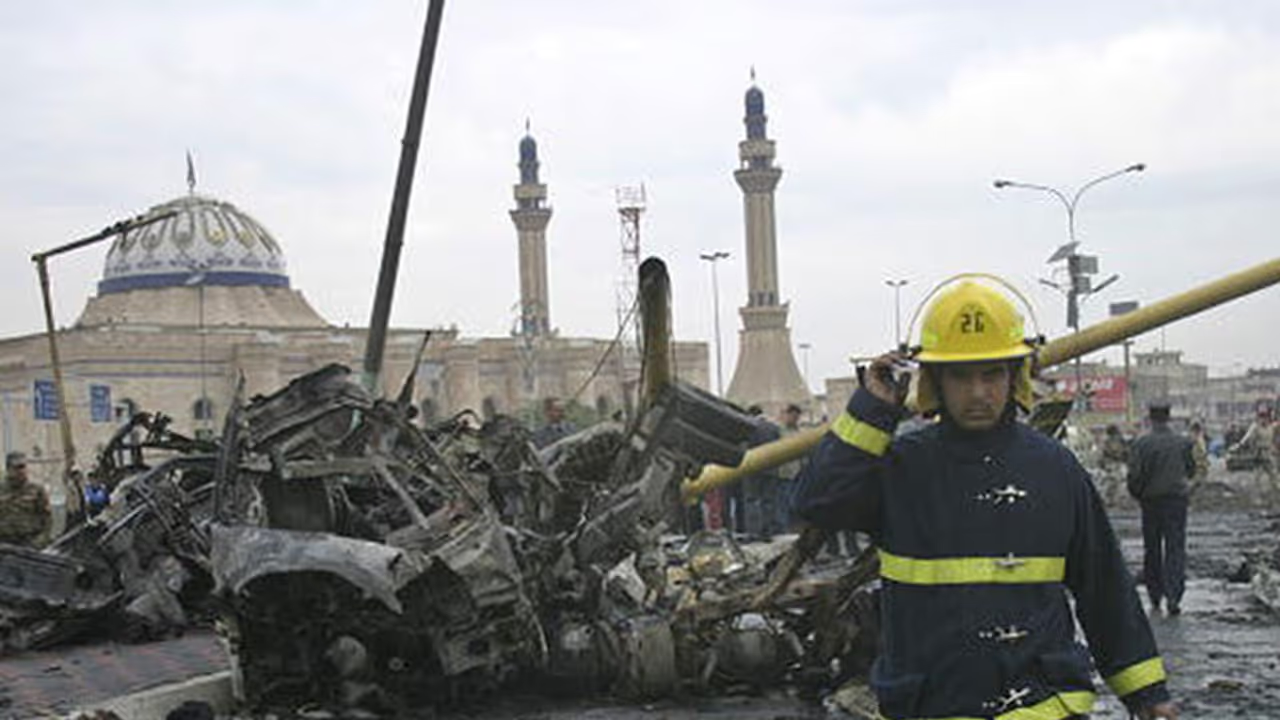This has probably been one of the bloodiest Ramadan claiming more than 800 lives in the last four weeks. The Islamic State had issued instructions to make the holy period 'with God’s permission, a month of pain for infidels everywhere'.

It was a bloodbath from the US to Philippines from Istanbul to Dhaka to Baghdad and Medina, from cafes to airports to shopping malls and nightclub, from streets to places of worship they have struck at every symbol of human civilisation.
They didn’t spare women or children. Many of these incidents have not been reported widely. On the first day of the holy month they executed 65 people -- among them students -- in Mosul, Iraq. Just outside Paris a policeman and his wife were killed.
They executed people in town squares in Raqqa and used their child soldiers to kill rivals and butchered 20 worshippers at a Shia shrine in Damascus. In Syria everyday people were killed for breaking their fast.
Gruesome Methods
How we cringe at the brutality played out, what can only be described as a death-cult? But the language of violence has always been like this; even in India terrorist groups have used brutal methods of elimination.
The Maoists routinely slit throats of people they suspect of being double agents or police informers. They also hack and kill. In Kashmir gruesome killings have been reported for years. In 1995 the Al-Faran had killed a foreign tourist by slitting his throat and beheading him slowly (as post mortem in Delhi’s All India Medical Institute would later reveal).
The name of the group was carved on the chest of the victim. In 2015 Muslim villagers, including seven children, were executed at the village of Kot Charwal in Rajouri, for having set up a self-defence group.
The ULFA in Assam would chop fingers to press for their ransom demands . The ‘killing fields’ in Assam’s Lakhipathar bear witness to bizarre methods of execution.
In Nagaland and Mizoram and Manipur several such instances of murder have been chronicled. As recent as two years back in Meghalaya’s Garo Hills a mother’s face was blown up at her home in front of her two children. The state violence has been equally disgusting.
In Assam’s ‘secret killing’ years people were picked up in the middle of the night, killed and their body chopped and thrown in the rivers to feed the fish.
Not the First Time
Believers and apologists were horrified when suspected terrorists of the Islamic State struck on Tuesday evening in Medina where Prophet Mohammad lies buried. But this is not the first time Mecca or Medina has been attacked.
In 1989 terrorists set off two bombs in Mecca, killing one and wounding 16. Kuwaiti Shias were allegedly behind the bombing.
In 1987 a violent clash between Iranian Shia pilgrims and Saudi security forces in front of the Sacred Mosque or Masjid al-Haram. 402 people were killed including 275 Iranian pilgrims, 87 Saudi policemen and 43 pilgrims from other countries; 649 people wounded.
In 1979 on November 20, a group of fanatics invaded and took over the Sacred Mosque, trapping tens of thousands of worshippers. The insurgents, whose leader declared himself to be the Mahdi, controlled the mosque for two weeks.
The siege ended after the death of 255 people including pilgrims, insurgents and military personnel. Back in 1669 the Turkish general Hassan Pasha along with his Haj caravan were massacred inside the Sacred Mosque, surrounding the Kaaba, by Meccan ruler Sharif Saad and his troops.
About 200 people were killed and 700 injured within the precincts of the mosque. In 930 a fanatical sect, Qarmatians, entered Mecca, slaughtered several pilgrims, looted the Kaaba and carried off the Black Stone.
In June 5, 1916. Medina was besieged for several months by Sharif Hussayn and his troops hounding the Turks from the city and Mecca.
In Aug 1969 carrying a thermos flask filled with kerosene, an Australian shearer, Denis Rohan, entered the Al Aqsa Mosque and started a fire causing significant damage including to the pulpit, a priceless heritage. Rohan believed by destroying the mosque he could accelerate the return of Jesus as king.
So the latest wave of killings around the world claimed and suspected to have been carried out by the Islamic State is not the first time such methods have been used and probably will not the last either.
Kishalay Bhattacharjee is a senior journalist and author. His most recent book is Blood on my Hands: Confessions of Staged Encounters (Harper Collins 2015). The views expressed here are his own.
Sources:
Mecca The Sacred City by Ziauddin Sardar
The Arabs A History by Eugene Rogan
Australian Broadcasting Corporation Radio National transcript
